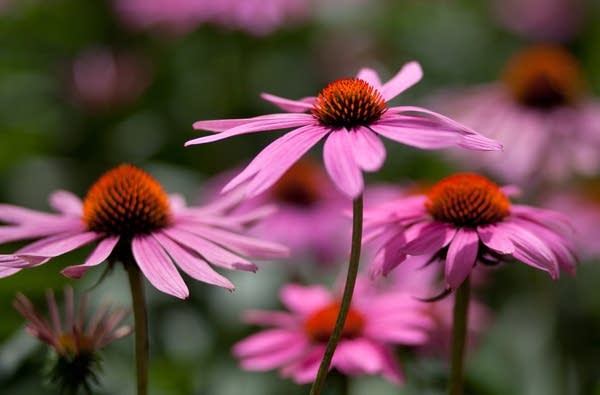Minnesota spring gardening: What you need to know

With above-average spring temperatures in southern Minnesota this week, we wanted to get a head start on garden projects and planning.
Mary Meyer, professor of horticulture at the University of Minnesota, joined MPR News' Kerri Miller to offer gardening tips and answer listener questions.
Minnesota spring gardening: What you need to know
Create a More Connected Minnesota
MPR News is your trusted resource for the news you need. With your support, MPR News brings accessible, courageous journalism and authentic conversation to everyone - free of paywalls and barriers. Your gift makes a difference.
• One of the first jobs of the season: Remove mulch and leaves on top of your perennial plants. Remove debris and limbs in your yard. Let your lawn dry out a bit before raking.
• The ground is still too frozen to do any real backyard digging. It can also damage your plants. If your footsteps leave imprints in your yard, it's still too early, Meyer said.
• This is the perfect time to start thinking about your yard's diversity last year and plan additions. If you have an ash tree, Meyer recommends planting another type of tree nearby to prepare for the eventual loss of the ash.
• Protect your garden from dog urine by creating a mulch area. Train your dogs to urinate in that area to save your plants and grass.

• Consider adding pollinator plants. The Arboretum has two upcoming seminars on the topic.
• Looking for some hearty native plants to add to your property? Meyer recommends the following:
Trees: bur oak, white pine
Smaller trees: Firebird crab apple
Native perennials: purple coneflower, blazing star, rudbeckia
Pollinators: Native milkweeds
• Starting from seed? Meyer says to try zinnias, salvia, milkweed, hyssop, mint
• Interested in adding fruits? For apples, you need two kinds for cross-pollination. Crab apples will work. Blueberries need acidic soil, so gardeners in the Twin Cites would need to add peat moss. Wild blackberries are easy, but be careful they don't spread.
• Minnesotans have a number of cold-weather grapes to choose from. Meyers recommends Frontenac and Marquette varieties.
• Try growing hops. They are easy to grow here, Meyer said.
Fun events and tips from listeners:
• The Minnesota Arboretum Pancake Brunch is Saturday, March 21, 8 a.m.-1 p.m. There will be tours and maple tapping demonstrations.
• "Please remind listeners to consider neighbors when choosing and planting...not everyone wants crab apples/walnuts dropping in their yard killing flowers and staining sidewalks, driveways, etc." - Maureen McGough-Pose on live stream
•"I recommend maple trees. When they are large enough you can make your own maple syrup. (Perfect in March)" - Jen on live stream